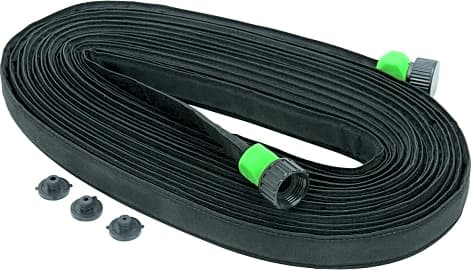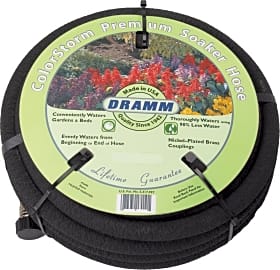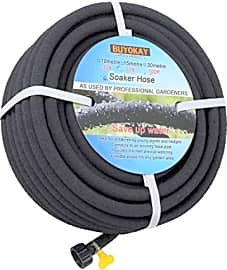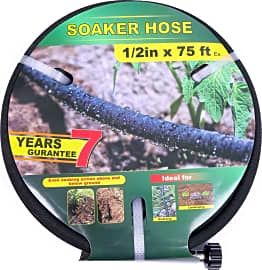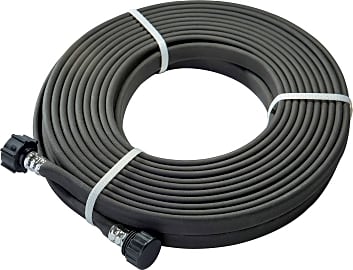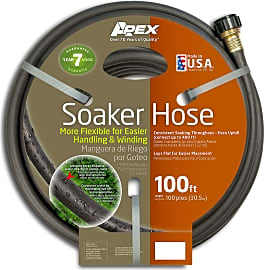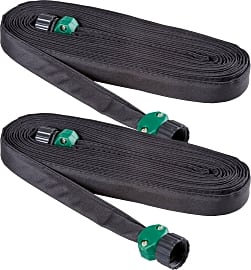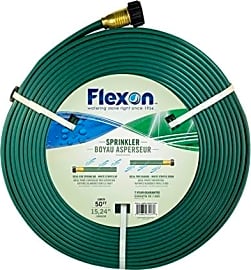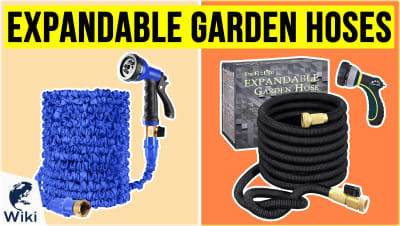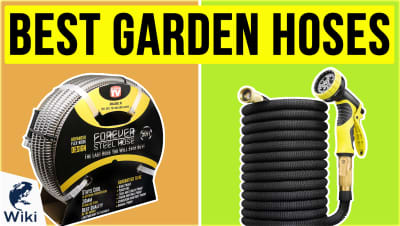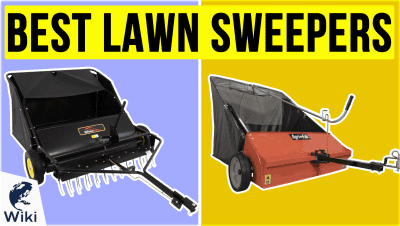The 10 Best Soaker Hoses

This wiki has been updated 31 times since it was first published in April of 2018. With rising water rates and an increased frequency of summer heat waves, it makes sense to invest in efficient ways to irrigate your garden. So, if you've planted an extensive vegetable plot or just want to keep your lawn lush all season long, one of these soaker hoses can help save you time, reduce your water bill, and deliver hydration directly to where it's most needed. When users buy our independently chosen editorial recommendations, we may earn commissions to help fund the Wiki.
Editor's Notes
October 30, 2020:
Expanding on what we said last year, one of the main advantages to using a soaker hose is its ability to keep the ground moist without waterlogging it or the surrounding foliage. Unlike a majority of traditional and expandable garden hoses, this tool provides a concentrated and direct delivery of water into the soil so it can reach plant roots without evaporating. Taking that into consideration, the soaker hose is typically a more cost- and resource-effective irrigation tool when it comes to watering plant beds and vegetable gardens.
We've replaced the Gilmour Weeper with the Rocky Mountain Flat, which offers a two-layered design with a PVC inner liner and durable nylon fabric cover. We've also updated the Green Mount GM-04060 to the Green Mount 04070P, which offers a higher burst rating than its predecessor (up to 60 PSI).
Newly added this year is the Buyokay 100. Its porous, clog-resistant construction delivers consistent soaking results, regardless of whether it is used above or below ground.
Finally, we wanted to expand upon the decision to include the Flexon FS50. The reason it can function as both a soaker hose and sprinkler is due to the white stripes along its body through which water flows. When these stripes are faced down, water can seep into the ground soil. When the stripes face up, water is delivered in a 40-foot wide spray pattern that makes the hose ideal for more traditional lawn care and maintenance.
July 05, 2019:
In many cases, these soaker hoses are used for two major purposes: to provide a more direct delivery of water to plants and root systems for large landscaping projects, and to prevent excess run-off and water leakage. Made from a combination of recycled materials, many of the options on the list are well-adept at being bent, flexed, and used for deep-reaching irrigation.
The extra-thick walls on the Dramm ColorStorm can help prevent leaks and significantly reduce water wastage. Furthermore, its nickel-plated connectors are also crush-proof. I added the Green Mount GM-04060 for its steady flow rate, pressure levels, and ability to withstand extreme temperatures. Also included the Taisia 1/2 Inch for its integrated UV inhibitors and ease of setup. The extendable design of the Melnor Flat makes it easy to maneuver around obstacles in your garden, while its compact size allows for easy storage. The Gilmour Weeper is extremely durable and can be placed both above and below ground, depending on your preferences. Its outer fabric also resists clogs. I think that the One Stop Gardens Seeper is still a worthy contender for its use of pressure regulator discs and woven nylon sleeve. Although the Swan Miracle-Gro does take a while to set up (and can be a bit annoying when having to cut it to an exacting length), its patented EZ-Connect fittings are pretty reliable nevertheless. Finally, the Flexon FS50 can double as both a soaker hose and conventional sprinkler.
Special Honors
National Firefighter Giant Soaker While it's doubtful you'd want to place this one in your vegetable garden, the expensive National Firefighter Giant Soaker definitely fills a niche when it comes to preventive or emergent situations (e.g. providing protection against wildfires). Constructed from lay-flat PVC, it is designed to be hooked up to a four- to nine-horsepower water pump and placed around large structures like homes and sheds. Depending on the power of the pump being used, it can output anywhere between 40 and 100 gallons per minute at 70 PSI. The only caveat here is that it cannot be directly connected to household tap systems. Instead, it requires access to other water sources, such as ponds, streams, wells, reservoirs, lakes, pools, or water tanks. nationalfirefighter.com
A.M. Leonard GW250 Measuring 250 feet long, made from recycled rubber, and capable of irrigating a two-foot wide strip, the A.M. Leonard GW250 has a 5/8-inch outer diameter and 1/2-inch inner diameter. It is both crush- and kink-resistant and equipped with extremely thick sidewalls for even water distribution. It delivers a peak flow rate of over four gallons per minute and it can also withstand freezing temperatures. amleo.com
Saving Green In More Ways Than One
Because these types of hoses facilitate slow water absorption at low pressures, their lack of spraying helps to prevent both water overuse and soil erosion over time.
Horticulture on any scale serves a variety of environmental and social benefits. When it comes to renewable resources and maximizing the usefulness of a plot of land, having a green thumb is an extremely valuable asset. However, landscaping and garden cultivation also has the potential to become quite costly over time, specifically as it pertains to water usage. Whether you tend the land as a pastime, grow vegetables to support a family, or just want to maintain the lushness of an outdoor living space, a reliable soaker hose can be used as an alternative to a conventional hose, so that you can concentrate smaller amounts of water where it's needed most, saving you precious money on that rising water bill.
Constructed from either rubber or polyethylene plastic, and similar in appearance to an ordinary garden hose, the soaker hose is a porous tube that allows water to slowly seep out along its entire length at very low pressure levels. When the hose is placed along a ground surface (or buried within mulch), oozing water is slowly absorbed into the soil where it flows directly to a plant's root system. This type of operation is somewhat different from a traditional sprinkler irrigation system, which delivers water to plants in a fashion similar to that of natural rainfall.
A typical soaker hose setup includes several components, beginning at the faucet. The faucet controls the flow of water coming directly from a pipe source. The faucet is also equipped with a backflow connector, a device that prevents contamination from dirt and sediment coming from an undesirable reverse flow of water. While not always necessary, the system can be equipped with both a filter and mechanical timer, as well. The timer gives a gardener the option to set and split watering intervals between different sections of a plot. A filter is particularly useful for preventing mineral deposits from entering the hose system in areas known for having hard water. A dedicated pressure regulator usually attaches to the timer near the faucet to maintain a stable pressure of between 10 and 12 pounds per square inch. This ensures consistent water flow through the system, while preventing a garden hose from spraying or breaking. Finally, one end of the garden hose (closest to the faucet) connects directly to the pressure regulator, while the opposite end connects to the soaker hose.
When it comes to sustaining plant life, soaker hoses provide many benefits. By delivering water at ground level, foliage remains relatively dry and free from potential fungal growth. Because these types of hoses facilitate slow water absorption at low pressures, their lack of spraying helps to prevent both water overuse and soil erosion over time. Due to this localized concentration of water, these hoses can also help prevent the overgrowth of undesirable weeds surrounding those plants you wish to see thrive. Using a soaker hose will save a lot of time, since you don't need to walk around your garden with a water can. Soaker hoses share some of the same benefits as a drip irrigation system, as well. They maintain consistent soil moisture while working to prevent excess evaporation.
Leveling The Watering Field
There are several practical considerations to keep in mind when investing in the appropriate soaker hose for your property. To operate efficiently, the hose shouldn't exceed a length of 100 feet and should be used on level surfaces, not slopes or steep hilly areas. Soaker hoses are usually available in 25, 50, 75, and 100-foot options, so it's important to determine which one works best for your garden setup. Are you planning to use the hose to irrigate a raised garden bed or a flower bed along the ground? If you have raised vegetation, you'll benefit from the extra length.
If you have raised vegetation, you'll benefit from the extra length.
Next, think about whether you'd like an installation kit or whether you prefer to purchase the soaker hose by itself. If you're new to gardening, an installation kit will come in handy, as it will include the necessary connectors for attaching the soaker hose to a traditional garden hose. This type of kit is also helpful when thread sizes between the soaker and garden hose differ, simplifying your overall assembly time with the appropriate attachments.
Depending on the type of soil and plants you may be growing, hose spacing is an important factor when your garden has rows of plants that require attention. On sandy soil, for example, your hose lines should ideally be around 12-18 inches apart, as opposed to 18-24 inches apart when they're used on loam or clay soils.
A Brief History Of Soaker Hoses
The first hoses appeared in ancient Greece as early as 400 BCE and were fashioned from large ox intestines with water bags attached to them. Although these intestines were flexible, they didn't last very long in those days.
The first hoses appeared in ancient Greece as early as 400 BCE and were fashioned from large ox intestines with water bags attached to them.
It wasn't until 1672 that Dutch inventor Jan van der Heyden would improve upon this design by stitching leather together, creating the first practical flexible hose design used to assist early fire brigades.
Material advances in hose design occurred over the next two centuries, including fashioning hoses from leather, canvas, sailcloth, cotton, and linen, all of which were heavy and prone to leakage. By 1870, rubber became the most popular choice for hose construction due to its flexibility, lightweight design, and resistance to potential leaks.
Prior to the first soaker hose patents in the 1970s, overhead sprinklers were the most common type of irrigation system, but they created puddles and erosion problems that weren't conducive to certain garden environments requiring direct watering of the soil. With its slow-dripping water beads and ground-based operation, the modern soaker hose fills a unique niche in terms of effective garden cultivation on a small scale.


